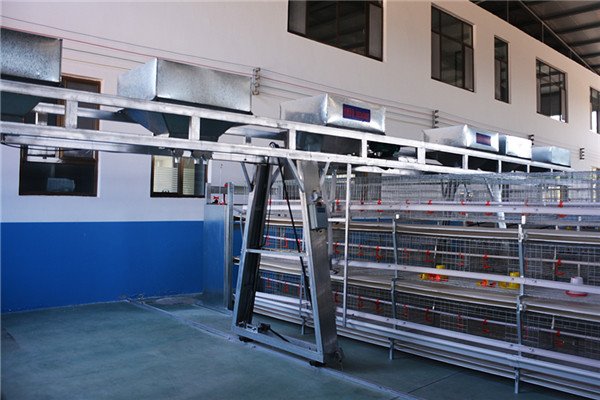Summer temperature is high, humidity is heavy, how to do moisture-proof work in layer-type laying hens and equipment? First of all, the humidity in the brooding room should not be too high. Generally require the first week of broodstock, relative humidity of 60% to 70%, and later try to maintain at 50% to 60%. Due to the large amount of chicken manure, high water content, the litter is very easy to wet, a layer of dry litter can be added and the padding can be changed twice a day. In addition, it is necessary to dry the spare bedding, and it is necessary to dry or dry it before use.
Keep the floor dry. If there is any problem in the house: If the faucet leaks, the water dispenser valve is damaged, the water in the sink becomes full, etc. The ground can be covered with cement, do a good job outside the house ditch drainage work, drinking fountains and sinks should be placed on the cement floor without litter, or barbed wire platform, even if the overflow, will be discharged directly from the ditch to the outside, tap There should be no water leakage in the drinking fountains. In addition, farmers in summer often spray disinfection of chicken houses. When disinfecting, care should be taken to properly increase the concentration and reduce the amount of water used.
The hygiene of chicken cages and sheds in egg cage culture can effectively reduce the growth of bacteria and viruses and ensure the normal growth rate of laying hens. So do you understand the cleaning and disinfection procedures of laying hen cages? The overall cleaning procedure is: first outside and inside, first after the whole, first up and down, from the front to the back. Remove the material line and water line equipment to the operation room. Disinfect the drinking line with disinfectant glacial acetic acid. Disinfectant should stay in the pipe for at least 12H, then rinse with water. Thoroughly clean the chicken dung, chicken feathers and garbage around the chicken cage and do a good job in environmental hygiene.
There are no sundries around the sheds, and housekeeping items are placed neatly. Remove the roof, clean the scaffold, dust and dirt on the roof and all utensils. Eradicate the chicken manure on the plank bed and the ground, and thoroughly clean the entire chicken house. There is no chicken dung, chicken feathers, and dust in the house to avoid clogging the sewage pipeline during flushing. Clean up the sewers, drains, and cesspools so that the drainage is unimpeded. Before cleaning and disinfecting, the total power supply in the house must be cut off. The washing machine and the lighting power supply must be connected with a leakage protection switch to prevent electric shock accidents.
Use a blower to clean the stacker-type equipment distribution cabinets and distribution boxes. The surfaces of all appliances prior to washing were first sprayed with detergent through a low pressure spray gun and maintained in a wet or foam state for more than 20 minutes. If high-pressure spray guns are used at this time, droplets containing microorganisms will be generated, polluting the environment and people. Then use a high-pressure spray gun to flush the contents of the house from front to back. This is a prerequisite for effective disinfection. When flushing, the bed, wall and other difficult to clean items should be brushed with a wire brush; clean the bag dirt inside the shrink seam. After the shed is rinsed clean, 4-5 vacant areas will be vacated for the rinsing of the feed line, material boxes and drinking fountains. Rinse the new fan: To open the new fan cover, thoroughly flush the dirt inside.
























